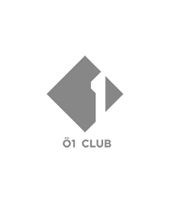Gabriele Münter, Bildnis Marianne von Werefkin, 1909 (Detail) © Städtische Galerie im Lenbachhaus und Kunstbau München, Gabriele Münter Stiftung, Bildrecht, Wien 2023
20.10.2023 - 18.02.2024
Gabriele Münter
Retrospective
GABRIELE MÜNTER
RETROSPECTIVE
Gabriele Münter (1877-1962) was far more than the woman at Wassily Kandinsky's side and saviour of the masterpieces of the Blaue Reiter in times of National Socialist barbarism. Exhibitions and publications over the past thirty years have led to a reassessment of her role in 20th century European art to the extent that she is considered a fixed star in international modernism. Some of her paintings are veritable icons of German Expressionism. Now the Leopold Museum is the first institution in Austria to dedicate a comprehensive retrospective to the outstanding protagonist of the New Munich Artists' Association and the Blaue Reiter. For this purpose, top-class exhibits from international museums and private collections have been acquired.
Münter's life and work were characterised alternately by enthusiasm and disappointment, curiosity and resignation. Recognised and encouraged as a talent for drawing at an early age, she additionally sharpened her eye for landscape details as a photographer in the course of a two-year journey through the USA. She was just as taken with the mighty Mississippi as with the vastness of the Texas prairies, but Münter also found unspectacular or burlesque everyday scenes, likenesses of familiar people and chance encounters worthy of pictures; she produced over 400 photographs. Simple landscape sections and street alignments with a strong foreshortening of perspective reveal the later painter.
In 1901 she came to Munich to study. The decisive encounter with Kandinsky, late Impressionist painting during their joint travels and an intensive preoccupation with prints preceded the breakthrough to clarity and reduction that she achieved in 1908 in Murnau in Upper Bavaria. She herself characterised this turning point in her painting as a transition "from painting off nature" to "giving an extract"; roofs, house facades and meadows were transformed into compositional elements of unbroken colours. The exchange with Alexei Jawlensky and the affinity for children's and folk art - especially for Bavarian reverse glass painting - soon produced a special form of Fauvism in Münter's work. In the less productive year of 1912, the Expressionist ventured her first steps towards abstraction, mostly by paraphrasing her existing interior scenes and still lifes.
My works often seem too different to me, and then I think again that it is one personality that makes the different.
Gabriele Münter in a letter to Wassily Kandinsky, 5 November 1910
The exile in neutral Sweden, to which the artist went in July 1915, was marked by exhibition successes, travel, artistic reorientation, but also by bitterness; the latter as a result of her separation from Kandinsky. The 1920s were marked by a creative crisis that ended with a guest appearance in New Objectivity. The 1930s were marked by difficult living conditions, but also by a consolidation of her style. Gabriele Münter was not branded as "degenerate" by the Nazi regime and was banned from working, but there was also a lack of success. The house in Murnau, which she shared with her second partner - the art historian Johannes Eichner - became a safe haven for modernism: the couple saved numerous early works by Kandinsky and the Blaue Reiter, along with extensive documentation, through the times of dictatorship and war. This stock was to become the property of the Lenbachhaus as a donation in 1957.
When the art historian Ludwig Grote organised the large group retrospective of the Blue Rider, which had been ostracised under National Socialism, at the Haus der Kunst in Munich in 1949, the interest of collectors and galleries in Gabriele Münter also increased. Once again, she produced numerous flower still lifes and landscape paintings, often in the form of self-paraphrases. With almost childlike determination, Münter returned to those old constants which, after many detours and compromises, were now to regain validity: a firm structure of lines, colours of sometimes extravagant radiance, distant vision, familiar repertoire. The artist also turned to abstract compositions in the post-war period.
Curator: Ivan Ristić
Technical consultant: Annegret Hoberg
Scientific assistant: Barbara Halbmayr







